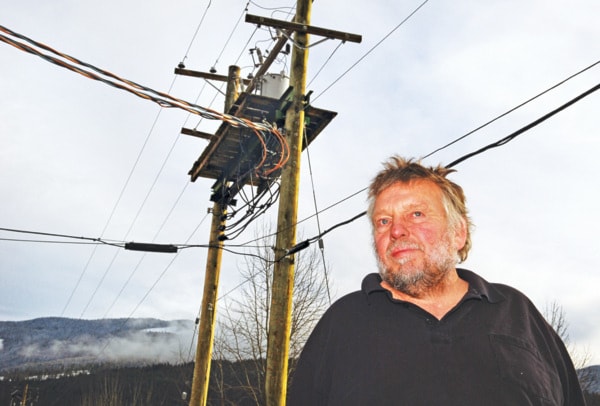A Malakwa man was forced to drop legal action against the province over his alleged exposure to industrial herbicides, including Agent Orange.
Larry Heal says he was advised by his lawyer not to pursue legal action against BC Hydro as 30 years had passed and, under the province’s statute of limitations, the case would be thrown out.
“I’d have all of BC Hydro’s lawyer fees to look after, so, on my lawyer’s advice I figured I’d take a step back,” says Heal.
Heal says his lawyer also asked him to sign a release agreement with the province which, in consideration of waiving his legal costs, would prevent him, or anyone related to him, from pursuing future legal action against the province over his “exposure to chemicals between 1961 and 1978.”
Heal says he will not sign the form, which is undated and contains no letterhead.
“They say we’re not admitting any guilt… then, on the other hand, they do so much to cover themselves, there’s nothing they left out,” said Heal. “If I signed that, it would be impossible to ever get anything.”
Heal’s legal action would have revolved around the province’s use of industrial herbicides in the 1960s and 70s next to his childhood home in Cherryville.
BC Hydro records obtained through a freedom of information request show that in 1976, a mix of the herbicides 2,4-dichlorophenoxyacetic acid (2,4-D) and 2,4,5-trichlorophenoxyacetic acid (2,4,5-T), diesel and water were used to treat 62.56 acres in the Vernon-Monashee area, and 98.2 acres in the Nicola Valley area.
Another document dated Nov. 14, 1967, shows the province’s Highways department had used thousands of gallons of 2,4-D and 2,4-T, mixed and combined, throughout the province.
Banned by Canada in 1985, Agent Orange is comprised of equal parts 2,4-D and 2,4,5-T, a chemical that, as a result of the manufacturing process, contains a toxic, carcinogenic dioxin believed to cause a variety of ailments, from skin disorders to birth defects and cancer.
“If you seen how badly exposed we were to the stuff, and for how many years, you cannot deny my family should not have something just for the exposure, let alone whether it caused any problems. Because the worry of all the cancer and all the stuff that we’re going to get from it is huge,” said Heal. “We had more exposure than probably most people in Vietnam got when they sprayed, because we lived right in it. It was in our water and everything.”
Heal says he is not backing down and is considering his options.
In April 2012 the NDP called on the province to initiate an investigation into the use of Agent Orange along B.C.’s highways and power lines.
